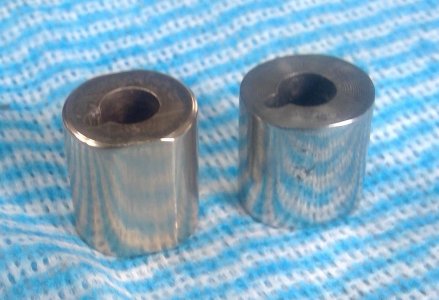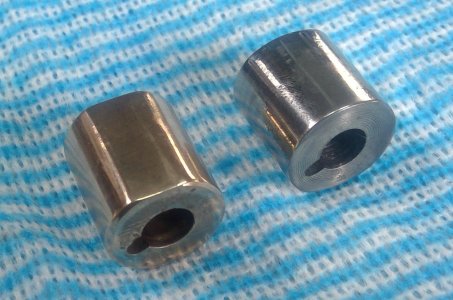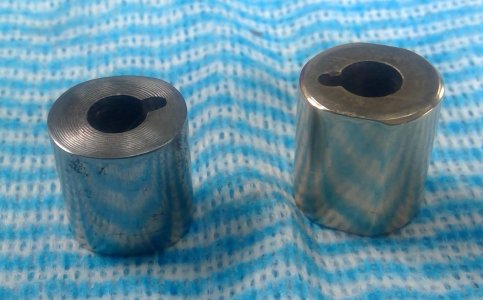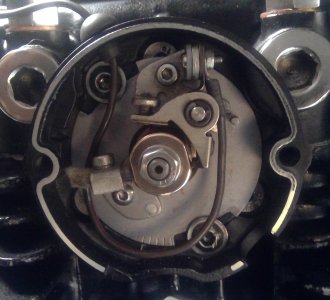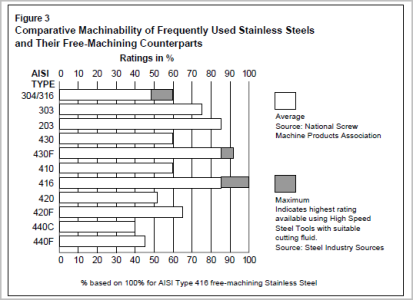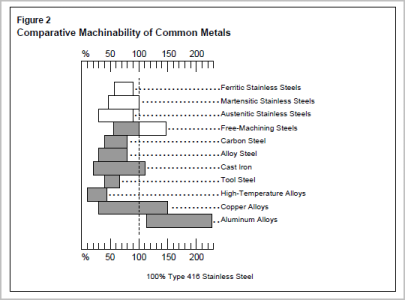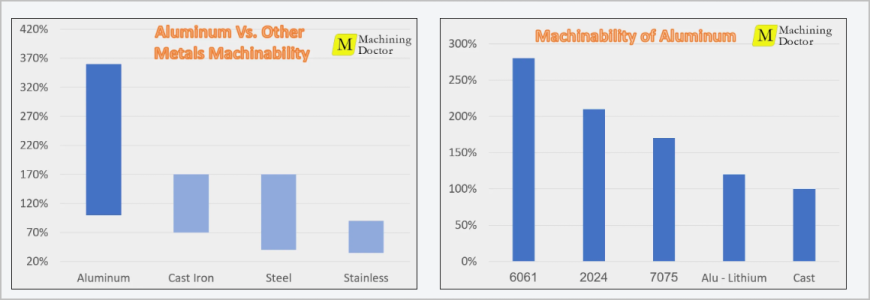I previously made a points cam from 304 stainless, which seems to wear alright, but my research revealed phosphor bronze to be the best material for wear against fibreglass laminate epoxy, depending on where you research of course. The original single ramp cam was made of carbon steel. Despite the research, I had my doubts the phosphor bronze would wear as well, so, decided to make one in carbon steel first. I have several old lathe dead centres so I cut a small section off the end of one, annealed it and formed the cam. That came up excellent, timing of points opening and closing and dwell on both ramps was spot on.
Now I've done some blacksmithing many years ago, mostly knives, so I was aware that heating and hardening/tempering does warp, stretch, swell, shrink the metal to some degree. Knives and stuff like that the warping is not enough to affect the finished product, however, the points cam has to have very tight variances in sizing, .02mm out means one side of the cam will give a points gap of .013, while the other .011. Doesn't sound like much but that points gap also affects the opening and closing of the points and therefore the dwell of the points, so, the timing of the ramps could vary 5+ degrees., that'a a guess by the way, I never actually measured it.
With this in mind when I heated the cam I did it as carefully as I could just using a torch and rotating the cam as I went. I then quenched it, cleaned it up, assembled it on the advance rod and checked the points timing - terrible. The heating threw the sizing out by up to .05 mm, close but not close enough, so that carbon steel attempt went in the bin.
I went to my exotics shop the next day and bought some phosphor bronze, some aluminium bronze and some cast iron. The AB and cast iron were as cheap as, but the PB was not: $30 for a piece of 25mm about 3" long was $30. For stock, I bought a few pieces of PB, one piece of AB and one of cast iron for an all up cost of $150. Machining is not a cheap hobby.
Anyway I spent an afternoon making another cam from PB, it came up nicely, but I have my doubts it will wear even as well as the stainless, it is super easy to work and seems much softer than the stainless. Still my research revealed fibreglass laminate epoxy rubbing on PB was the best, possibly due to the lubricating properties of PB. Time will tell.
I still have some cast iron and some AB, so at a later date I may try these metals out as well.
I used the mill this time to form the ramps, first filing a flat on the cam in the appropriate position, then vicing that on the mill, milling a flat 180.degrees opposite, then turning over 180 degrees again and milling the filed section to make it perfectly flat and the same thickness either side. To give you an idea how important sizing is on a points cam, the difference in thickness of the two ramps, ie, from the central hole to the face of the ramp, was .01mm, but that threw the timing out considerably on one side, so I finished off by rubbing the flat on 240 grit emery.
Anyhow, here's the PB cam, nicely polished.
Now I've done some blacksmithing many years ago, mostly knives, so I was aware that heating and hardening/tempering does warp, stretch, swell, shrink the metal to some degree. Knives and stuff like that the warping is not enough to affect the finished product, however, the points cam has to have very tight variances in sizing, .02mm out means one side of the cam will give a points gap of .013, while the other .011. Doesn't sound like much but that points gap also affects the opening and closing of the points and therefore the dwell of the points, so, the timing of the ramps could vary 5+ degrees., that'a a guess by the way, I never actually measured it.
With this in mind when I heated the cam I did it as carefully as I could just using a torch and rotating the cam as I went. I then quenched it, cleaned it up, assembled it on the advance rod and checked the points timing - terrible. The heating threw the sizing out by up to .05 mm, close but not close enough, so that carbon steel attempt went in the bin.
I went to my exotics shop the next day and bought some phosphor bronze, some aluminium bronze and some cast iron. The AB and cast iron were as cheap as, but the PB was not: $30 for a piece of 25mm about 3" long was $30. For stock, I bought a few pieces of PB, one piece of AB and one of cast iron for an all up cost of $150. Machining is not a cheap hobby.
Anyway I spent an afternoon making another cam from PB, it came up nicely, but I have my doubts it will wear even as well as the stainless, it is super easy to work and seems much softer than the stainless. Still my research revealed fibreglass laminate epoxy rubbing on PB was the best, possibly due to the lubricating properties of PB. Time will tell.
I still have some cast iron and some AB, so at a later date I may try these metals out as well.
I used the mill this time to form the ramps, first filing a flat on the cam in the appropriate position, then vicing that on the mill, milling a flat 180.degrees opposite, then turning over 180 degrees again and milling the filed section to make it perfectly flat and the same thickness either side. To give you an idea how important sizing is on a points cam, the difference in thickness of the two ramps, ie, from the central hole to the face of the ramp, was .01mm, but that threw the timing out considerably on one side, so I finished off by rubbing the flat on 240 grit emery.
Anyhow, here's the PB cam, nicely polished.

